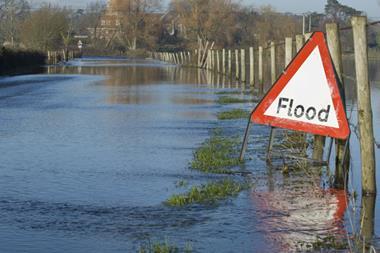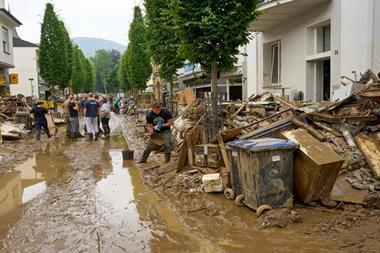A combination of recoverable and resistant measures for properties could avoid the high cost for future floods
Damage from deep and prolonged flooding can cost nine times more and takes longer to repair compared to shallow, shorter-duration flooding. This is according to research carried out by Sedgwick and the University of the West of England, which was funded by Flood Re.
River flooding claims analysed in this study cost three times as much as surface water flooding claims because they are often characterised by higher depth and longer duration. Moreover, claims for floods lasting more than 24 hours took an extra 100 days to process on average.
Based on these findings, the study suggests that installing the right combination of flood resilience measures at reinstatement will have a direct impact on the cost and duration when settling future claims.
A combination of recoverable and resistant measures for properties could avoid the high cost for future floods.
Recoverable packages are designed to limit damage once water enters a home such as resilient plaster and floors. Passive resistance packages are designed to limit the water entering a home, for example self-closing airbricks, non-return valves, sealing brickwork and flood doors.
Ian Gibbs, national technical manager at Sedgwick said: “The study is an important step to examine the effectiveness of resilience measures in reducing flood risk over the long term.
”There is a common misconception that resilience measures will not be economically worthwhile. However, we find in practice, where properties are flood resilient, there is a really significant reduction in claims spend and time out of the property.”
Flood resilience training
In other news, Sedgwick has also announced it is partnering with the Chartered Institution of Water and Environmental Management (CIWEM) to help design, develop and deliver accredited Property Flood Resilience (PFR) training on behalf of the UK’s Environment Agency.
The training will be tailored for three specific target audiences - industry professionals, Environment Agency staff and other Risk Management Authorities - with the objective of providing them with the knowledge of best practices in the application of the definitive PFR delivery standards, the Code of Practice (CoP) and Guidance for Property Flood Resilience, published by the Construction Industry Research and Information Association (CIRIA), in January 2021.
Gibbs said: “The training will be beneficial to both brokers and insurers as well as to the flood/construction industry, as it will enable all parties to raise standards of property flood resilience. The rising knowledge levels in the Environment Agency and Local Flood Authorities is an additional strand to the training.”
Darren Eckford, CIWEM head of learning and development services added: “As a project team, we are fully cognisant of the skills gaps and range of highly nuanced issues in the field, the way in which delegates acquire knowledge and skills and hence, the need for engaging training content and application-ready solutions that will achieve the best outcomes.”
Sedgwick and CIWEM are currently working on producing the training plans and other material required for the programme, with the objective of beginning the actual training later in the year.




















No comments yet